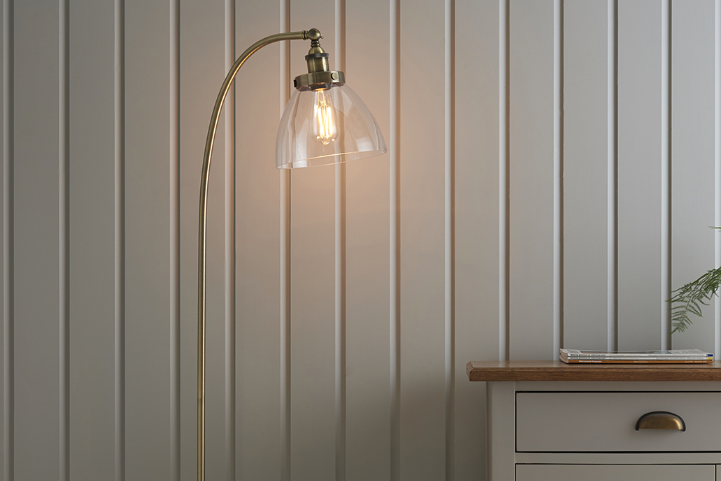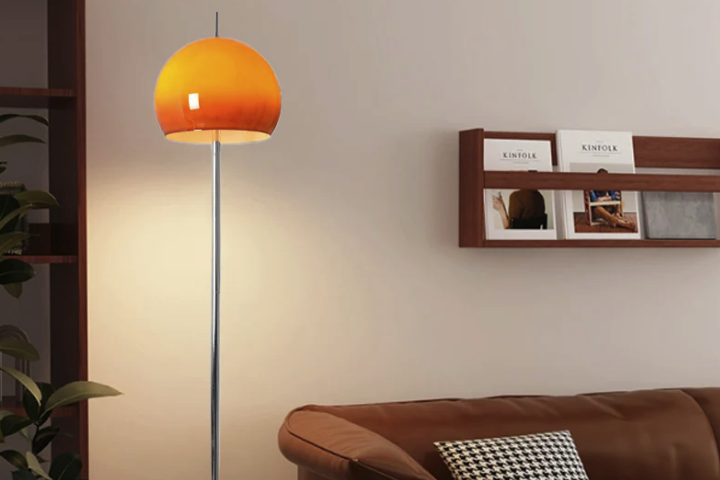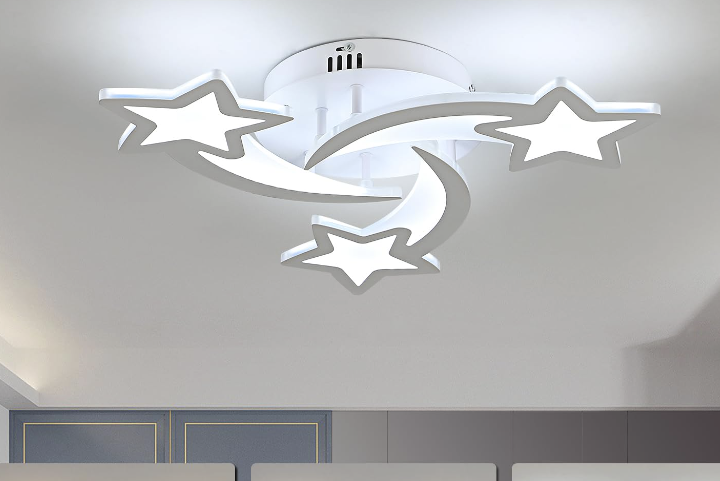Lighting Darkedesigns plays a crucial role in interior design, and it can have a significant impact on the overall mood and functionality of a living room. The right lighting can transform a space, making it feel warm and inviting or bright and energetic. It can also enhance the functionality of the room, providing adequate illumination for various activities such as reading, watching TV, or entertaining guests. In this article, we will explore the importance of lighting in interior design and discuss how it can affect the ambiance and functionality of a living room.
Understanding the Importance of Lighting in Your Living Room
The lighting in a living room can greatly influence the overall ambiance of the space. Bright, white light can create a clean and modern feel, while warm, soft light can make the room feel cozy and inviting. The right lighting can also highlight architectural features or artwork, adding visual interest to the space. Additionally, lighting can affect the mood of the room, with bright light promoting alertness and productivity, and soft light promoting relaxation and comfort.
There are different types of lighting that serve different purposes in a living room. Ambient lighting provides overall illumination for the space and is usually achieved through ceiling-mounted fixtures such as chandeliers or recessed lights. Task lighting is focused on specific areas where activities such as reading or working take place, and it is typically provided by table lamps or floor lamps. Accent lighting is used to highlight specific objects or areas in the room, such as artwork or architectural features, and it is often achieved with track lighting or wall-mounted fixtures.
Choosing the Right Type of Lighting for Your Living Room
When selecting lighting fixtures for your living room, it is important to consider both style and functionality. There are various types of lighting fixtures available, including chandeliers, pendant lights, wall sconces, table lamps, and floor lamps. Each type of fixture has its own unique style and purpose.
Chandeliers are often used as a focal point in a living room and can add a touch of elegance and sophistication to the space. Pendant lights are versatile and can be used to provide both ambient and task lighting. Wall sconces can be used to create a warm and inviting atmosphere, while table lamps and floor lamps provide task lighting and can be easily moved around the room.
When selecting lighting fixtures, it is important to consider the size of your living room and the height of your ceilings. A large chandelier may overwhelm a small space, while a small pendant light may get lost in a large room. It is also important to consider the style of your living room and choose fixtures that complement the overall design aesthetic.
Creating a Layered Lighting Scheme for Maximum Impact
A layered lighting scheme involves using different types of lighting to create depth and dimension in a space. By combining ambient, task, accent, and soft lighting, you can achieve maximum impact in your living room.
To create a layered lighting scheme, start by installing ambient lighting fixtures such as chandeliers or recessed lights to provide overall illumination for the space. Then, add task lighting in areas where specific activities take place, such as reading or working. This can be achieved with table lamps or floor lamps placed near seating areas or desks.
Next, incorporate accent lighting to highlight specific objects or areas in the room. This can be achieved with track lighting or wall-mounted fixtures directed towards artwork or architectural features. Finally, add soft lighting to create an ambient atmosphere in the room. This can be achieved with dimmable fixtures or by using warm-colored light bulbs.
By combining these different types of lighting, you can create a dynamic and visually appealing living room that is both functional and inviting.
Incorporating Natural Light into Your Living Room Design
Natural light is an essential element in interior design, and it offers numerous benefits for your living room. Natural light can make a space feel larger and more open, and it can also improve the overall mood and well-being of the occupants. Additionally, natural light is energy-efficient and can help reduce the need for artificial lighting during the day.
To incorporate natural light into your living room design, start by maximizing the amount of natural light that enters the room. This can be achieved by using light-colored window treatments that allow light to pass through, such as sheer curtains or blinds. You can also consider installing skylights or larger windows to increase the amount of natural light in the room.
It is also important to position furniture and other objects in the room in a way that does not block the natural light. Avoid placing large pieces of furniture in front of windows or blocking the path of light with tall plants or decorative objects.
Selecting the Right Light Bulbs for Your Living Room

When it comes to selecting light bulbs for your living room, there are several options to choose from. The most common types of light bulbs include incandescent, halogen, fluorescent, and LED.
Incandescent bulbs are the traditional choice and provide warm, soft light. However, they are not very energy-efficient and have a shorter lifespan compared to other types of bulbs.
Halogen bulbs are similar to incandescent bulbs but are more energy-efficient and have a longer lifespan. They also provide bright, white light, making them suitable for task lighting.
Fluorescent bulbs are energy-efficient and have a longer lifespan compared to incandescent bulbs. However, they can produce harsh, cool light that may not be suitable for all living rooms.
LED bulbs are the most energy-efficient option and have a long lifespan. They are available in a variety of colors and can be dimmed to create different moods in the room.
When selecting light bulbs for your living room, consider the color temperature and brightness level. Warm-colored bulbs (around 2700K) create a cozy and inviting atmosphere, while cool-colored bulbs (around 5000K) create a bright and energetic feel. It is also important to consider the brightness level of the bulbs and choose ones that provide adequate illumination for the space.
Using Dimmer Switches to Control Your Living Room Lighting
Dimmer switches are a great addition to any living room as they allow you to control the brightness level of your lighting fixtures. Dimmer switches offer several benefits, including energy savings, increased flexibility, and the ability to create different moods in the room.
By using dimmer switches, you can reduce the amount of energy consumed by your lighting fixtures. By dimming the lights, you can lower the wattage and save on electricity costs. Dimmer switches also offer increased flexibility as they allow you to adjust the brightness level according to your needs. Whether you want bright light for reading or soft light for watching TV, dimmer switches give you the ability to customize the lighting in your living room.
Dimmer switches also allow you to create different moods in the room. By adjusting the brightness level, you can create a cozy and intimate atmosphere or a bright and energetic feel. This can be particularly useful when entertaining guests or when you want to relax and unwind after a long day.
When installing dimmer switches, it is important to choose ones that are compatible with your lighting fixtures and light bulbs. Some types of bulbs, such as fluorescent or certain types of LED bulbs, may not be compatible with dimmer switches. It is also important to follow the manufacturer’s instructions for installation and use.
Highlighting Artwork and Decor with Accent Lighting
Accent lighting is a great way to highlight artwork and decor in your living room. By directing light towards specific objects or areas, you can draw attention to them and create visual interest in the space.
There are several types of accent lighting fixtures that can be used to highlight artwork and decor. Track lighting is a popular choice as it allows you to adjust the direction of the light and create different effects. Wall-mounted fixtures, such as picture lights or wall sconces, can also be used to highlight artwork or architectural features.
When using accent lighting, it is important to consider the placement and angle of the fixtures. The light should be directed towards the object or area you want to highlight, but it should not create glare or shadows. Experiment with different angles and positions to achieve the desired effect.
It is also important to consider the color temperature and brightness level of the accent lighting. Warm-colored bulbs (around 2700K) can create a cozy and inviting feel, while cool-colored bulbs (around 5000K) can create a bright and energetic atmosphere. The brightness level should be adjusted according to the size and importance of the object or area you want to highlight.
Adding Task Lighting for Functionality in Your Living Room
Task lighting is essential for creating a functional living room. It provides focused illumination for specific activities such as reading, working, or playing games. By adding task lighting to your living room, you can improve visibility and enhance the functionality of the space.
There are several types of task lighting fixtures that can be used in a living room. Table lamps are a popular choice as they can be placed on side tables or desks near seating areas. Floor lamps are also versatile and can provide task lighting in various areas of the room. Desk lamps are specifically designed for working or studying and can be placed on desks or workstations.
When adding task lighting to your living room, it is important to consider the placement and angle of the fixtures. The light should be directed towards the area where the activity takes place, but it should not create glare or shadows. Adjustable fixtures are particularly useful as they allow you to customize the direction and angle of the light.
It is also important to consider the color temperature and brightness level of the task lighting. Warm-colored bulbs (around 2700K) can create a cozy and inviting atmosphere, while cool-colored bulbs (around 5000K) can provide bright and focused light. The brightness level should be adjusted according to the specific activity and the needs of the occupants.
Creating an Ambient Atmosphere with Soft Lighting
Soft lighting is a great way to create an ambient atmosphere in your living room. It provides a warm and inviting feel, making the space more comfortable and relaxing. By using soft lighting, you can transform your living room into a cozy retreat where you can unwind and recharge.
There are several ways to create soft lighting in your living room. Dimmable fixtures are a great option as they allow you to adjust the brightness level according to your needs. Wall sconces or table lamps with fabric shades can also provide soft, diffused light that creates a warm and inviting atmosphere.
When creating soft lighting, it is important to consider the color temperature and brightness level of the bulbs. Warm-colored bulbs (around 2700K) are ideal for creating a cozy and intimate feel, while cool-colored bulbs (around 5000K) may create a harsh or clinical atmosphere. The brightness level should be adjusted to create a soft and gentle glow that is not too bright or overpowering.
Tips for Properly Positioning Your Living Room Lighting Fixtures
Proper positioning of lighting fixtures is essential for achieving the desired effect in your living room. The placement and angle of the fixtures can greatly influence the overall ambiance and functionality of the space.
When positioning ambient lighting fixtures, such as chandeliers or recessed lights, it is important to consider the size and height of your living room. The fixture should be centered in the room and hung at an appropriate height. In general, chandeliers should be hung 30 to 36 inches above the dining table or seating area, while recessed lights should be spaced evenly throughout the room.
Task lighting fixtures, such as table lamps or floor lamps, should be placed near seating areas or workstations. The light should be directed towards the specific area where the activity takes place, but it should not create glare or shadows. Adjustable fixtures are particularly useful as they allow you to customize the direction and angle of the light.
Accent lighting fixtures, such as track lighting or wall-mounted fixtures, should be positioned to highlight specific objects or areas in the room. The light should be directed towards the object or area you want to highlight, but it should not create glare or shadows. Experiment with different angles and positions to achieve the desired effect.
In conclusion, lighting plays a crucial role in interior design and can greatly impact the mood and functionality of a living room. By understanding the importance of lighting and selecting the right type of fixtures and bulbs, you can create a dynamic and visually appealing space. By incorporating natural light, using dimmer switches, and adding accent and task lighting, you can enhance the overall ambiance and functionality of your living room. Proper positioning of lighting fixtures is also essential for achieving the desired effect. By following these tips and guidelines, you can achieve the perfect lighting in your living room and create a space that is both beautiful and functional.
If you’re looking to elevate the ambiance of your living room, lighting plays a crucial role. Chantelle Nicole Designs, a renowned interior design blog, offers valuable insights on how to choose the right chandelier for your living room. In their article, they provide expert tips and advice on selecting the perfect chandelier that complements your space and enhances its overall aesthetic. Whether you prefer a modern, minimalist look or a more traditional style, this article will guide you through the process of finding the ideal lighting fixture for your living room. Check out their article to discover how to transform your living room with the right lighting choice.





